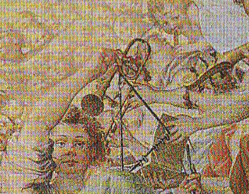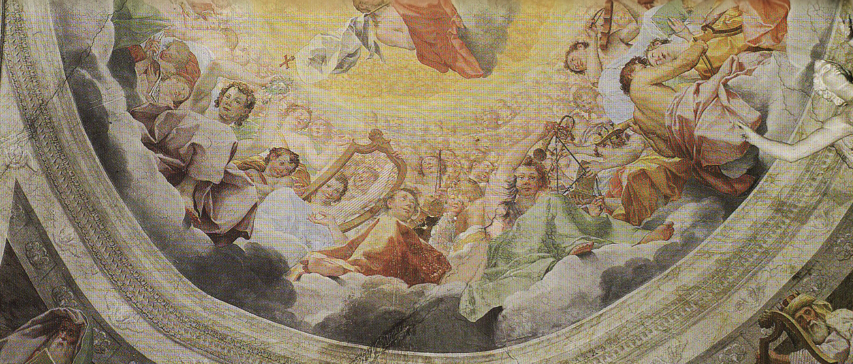Added the below painting and entry to the 16th century timeline. The painting originates from Siena, Italy, the location of a surprisingly active trombone scene in the 16th century; there are many, many Sienese entries in the timeline drawn from D’Accone’s excellent book, The Civic Muse, which I include in the trombone history mini-bibliography. Herewith a few of my favorites, showing that, angelic depictions notwithstanding, trombonists were not always perfect:
1467—Siena, Italy: A trombone vacancy in the palace wind band is filled by Frenchman Petro Tristano da Valenza. He begins with a monthly salary of L. 8, but receives a raise to L. 12 within months. Upon the first anniversary of his appointment, he is promised another raise, this one to L. 16, on the condition that he acquire and wear the required uniform worn by the other band members. He apparently refuses to do this, as he is replaced a few months later (D’Accone, Civic Muse 538).
1564—Siena, Italy: Tiberio di Girolamo Rivolti, a trombonist recently hired at the Siena palace, has his meal privileges revoked, apparently for some misdeed. The following day, the order is reversed, and Tiberio is described as “a musician of tender age and of much musical promise.” Four years later, while he is still Palace trombonist, Tiberio is ordered to jail “for writing injurious words on the wall and lying to a colleague.” He eventually becomes one of the most well-respected performers to come out of 16th century Siena (D’Accone, Civic Muse 581, 795).
1580—Siena, Italy: Members of the wind band, including a trombonist, perform at a non-official function without permission. They are subsequently charged by the priors (city rulers) and ordered to be incarcerated for 2 days, along with losing their meal privileges for 6 days. Their sentence is later lowered to 1 day of incarceration (D’Accone, Civic Muse 589).
1585—Siena, Italy: A dispute arises between trombonists in the Palace wind band. According to the record, Alberto Gregori and Giovanbattista Formichi disagree over the right to play “the first bass in the musical ensemble, in truth, the basic and most important part.” Alberto claims that, as the successor to Tiberio, who previously held the post, he should have the position. Giovanbattista’s claim is that “it was an old custom of this chapel that the oldest persons succeeded to this post” and that he deserves the position because of seniority. In the end, the priors (city rulers) decree that each should have the honor a month at a time (D’Accone, Civic Muse 597).
________________________________________________________________________________

 1594—Siena, Italy: A choir vault in Certosa di Maggiano, painted by Bartolomeo Cesi, features numerous angel-musicians surrounding the Holy Trinity, including a trombone partially obscured by a triangle (Graziani 24).
1594—Siena, Italy: A choir vault in Certosa di Maggiano, painted by Bartolomeo Cesi, features numerous angel-musicians surrounding the Holy Trinity, including a trombone partially obscured by a triangle (Graziani 24).